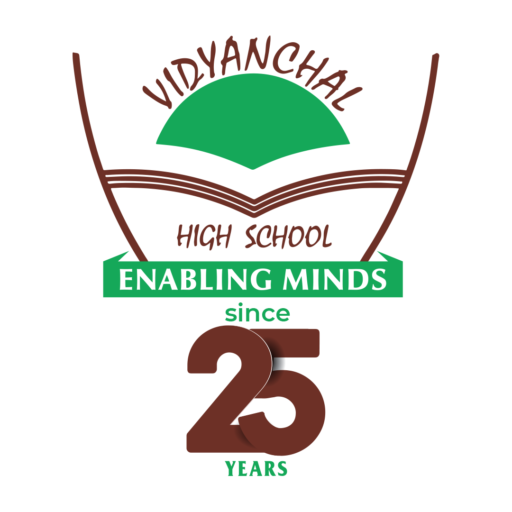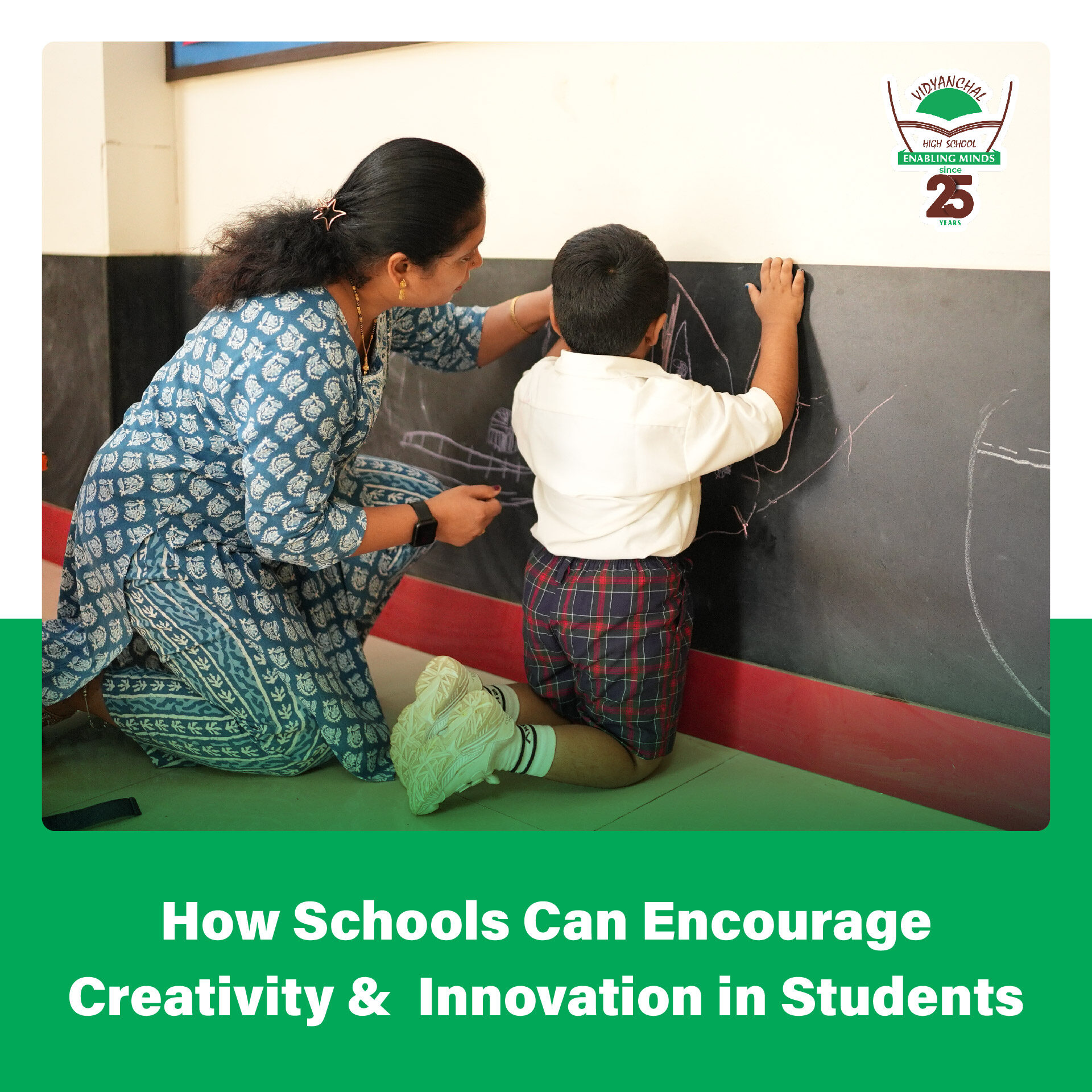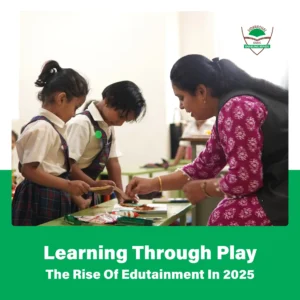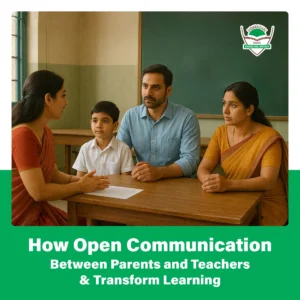In a world that’s evolving faster than ever- where artificial intelligence, space exploration, climate change, and startup culture are rewriting norms- creativity and innovation are no longer just desirable skills.
They are essential. For schools, especially in India, the challenge lies in nurturing these traits in students without compromising on academic rigour.
India’s National Education Policy (NEP) 2020 has taken a bold step in this direction, encouraging experiential learning, flexibility in curriculum, and an emphasis on critical thinking. But how can this vision be translated into real change in classrooms?
Here’s a comprehensive look at how Indian schools can actively foster creativity and innovation among students- across age groups and learning levels.
Why Creativity & Innovation Matter in Education
Before we dive into the ‘how’, let’s understand the ‘why’.
1. Future-Proof Skills
In the age of automation and AI, jobs that require imagination, empathy, and complex problem-solving are becoming more valuable. Creativity fuels these capabilities.
2. Academic Engagement
Creative tasks and problem-solving projects increase student engagement. Students are more likely to retain concepts when they’re allowed to explore them freely.
3. Boosts Confidence & Mental Agility
Innovative thinking encourages students to boost confidence, take risks, handle failures constructively, and think independently- skills essential in both professional and personal life.
The Current Indian Scenario: A Quick Reality Check
While Indian students regularly top global academic competitions, the system has long been criticized for rote learning and over-standardization. However, there is a visible shift today:
- CBSE and ICSE Boards now emphasize project-based learning.
- NEP 2020 calls for “curiosity-driven” and “experiential” education.
- More progressive schools and private institutions are incorporating design thinking, coding, and STEAM education early on.
Still, systemic transformation requires consistent, practical efforts. Let’s explore actionable strategies schools in India can adopt.
1. Redesign Classrooms as Creative Spaces
Flexible Layouts
Gone are the days of fixed benches in neat rows. Classrooms can now be dynamic- featuring reading corners, discussion circles, maker spaces, and tech zones.
Use of Colour & Display
Showcasing student art, project prototypes, and creative assignments on classroom walls instills pride and encourages expression.
2. Integrate Project-Based & Experiential Learning
Cross-Subject Projects
Encourage students to work on interdisciplinary projects. For instance, a class on climate change could involve:
- Science (causes)
- Geography (regions affected)
- Art (posters/infographics)
- Language (awareness campaign writing)
Real-World Exposure
Partner with local artisans, scientists, designers, or even startups. Let students interact with professionals and apply classroom concepts to real-world challenges.
3. Build a Culture of Questioning
In many Indian classrooms, questioning the teacher is still seen as disrespectful. This mindset needs to shift.
Encourage “Why?” and “What if?”
Teachers should reward, not reprimand, curiosity. Regular “Ask Anything” sessions can be built into timetables.
Use Open-Ended Assessments
Instead of only asking, “What is photosynthesis?”, ask, “What would happen if plants could grow without sunlight?”
4. Start with Early Childhood Education
Creativity blooms in the early years. Play-based learning, role-play, puppetry, music, and movement should be encouraged in pre-primary and primary stages.
Indian Examples:
- Reggio Emilia-inspired Indian preschools are gaining popularity in metros.
- Schools like Sanskriti School, Delhi and Rishi Valley School, Andhra Pradesh, incorporate hands-on learning and environmental projects from early grades.
5. Offer Creative Clubs & Innovation Labs
Every student has a different passion. Creative clubs- like robotics, debate, theatre, or art- give them the space to explore these interests deeply.
Innovation Labs (ATL) in Schools
Under NITI Aayog’s Atal Innovation Mission, over 10,000 schools in India have set up Atal Tinkering Labs (ATL) to encourage design thinking and entrepreneurship.
Even without high-tech labs, schools can start:
- Mini maker corners with recycled materials
- Idea walls for students to post problems and brainstorm solutions
6. Train Teachers to Be Facilitators, Not Just Instructors
No amount of infrastructure matters if teachers don’t adopt the right mindset.
Teacher Training Workshops
Regular upskilling in:
- Creative lesson planning
- Student-led learning models
- Using digital tools like Canva, Scratch, or TinkerCAD
Co-Creation of Curriculum
Teachers can involve students in designing parts of the curriculum, especially for creative subjects. This fosters ownership and mutual respect.
7. Reform Assessment Methods
Traditional exams often focus on memorisation. A more balanced approach includes:
Portfolio-Based Evaluation
Let students compile a portfolio showcasing projects, writing, ideas, or artwork over the year.
Peer & Self-Assessment
Allowing students to evaluate themselves or each other cultivates critical thinking and emotional intelligence.
Viva Voce and Presentations
Oral exams and project presentations help develop communication and creative articulation- key 21st-century skills.
8. Promote Arts, Culture & Storytelling
Indian schools often sideline the arts in favour of academics. However, dance, music, theatre, and literature stimulate imagination like nothing else.
Indian Folk Traditions in Curriculum
Incorporating regional storytelling forms- like kathputli (puppetry), warli painting, or baul music– can make learning culturally rooted and engaging.
Storytelling as a Tool
Using stories to explain historical events, moral dilemmas, or scientific phenomena makes lessons more memorable.
9. Leverage Technology for Creativity
Technology isn’t just for rote e-learning. It can be a launchpad for innovation.
Digital Tools
- Tynker, Scratch: For basic coding and animation
- Google Arts & Culture: Virtual museum tours
- Flipgrid: Student video discussions and responses
Gamified Learning
Apps like Kahoot! or Quizizz turn assessments into interactive games- making learning fun and student-led.
10. Host Innovation Events & Competitions
Competitions give students a goal-oriented way to innovate.
- In-house hackathons
- Invention exhibitions
- Young entrepreneur fests
- Environment problem-solving marathons
Example:
Schools can set a monthly “Innovation Challenge” e.g., “Design a School Bag That’s Rainproof and Eco-Friendly.” Teams compete and present ideas, no matter how wacky!
11. Encourage Mindfulness & Reflection
Creativity thrives in relaxed, reflective minds.
- Daily journaling or gratitude logs
- Mindfulness meditation sessions
- Quiet creative time during the week– where students draw, doodle, or write freely
12. Parent Involvement in Creative Growth
Often, even if schools promote innovation, parental pressure for marks and ranks stifles it.
Parent Workshops
Schools can host sessions to educate parents on the value of creativity in long-term success.
Display of Student Work
Open days or exhibitions can showcase student creativity- boosting both confidence and parental appreciation.
Let’s Conclude
Creativity and innovation are not “extra” or “nice-to-have” skills anymore- they are vital to success in a dynamic, unpredictable world. Indian schools, whether rural or urban, public or private, have the potential to lead the global shift in reimagining education.
From project-based learning and teacher training to art integration and technology use, the strategies are plenty- and they don’t require a complete overhaul. Just consistent, student-first thinking.
In nurturing curious, imaginative children today, we’re building a brighter, more adaptable India for tomorrow.
FAQs
- Is creativity more important than academic performance?
Both are important. Creativity enhances understanding and problem-solving, often improving academic performance in the long run. - How can schools encourage innovation without extra costs?
Simple methods like peer discussions, paper-based projects, art from waste, and storytelling can nurture innovation without major investment. - Are Indian boards supportive of creative learning?
Yes. The CBSE, ICSE, and NEP 2020 all encourage project-based and experiential learning. - How can parents support creativity at home?
Encourage hobbies, ask open-ended questions, appreciate creative efforts (not just marks), and limit screen time with structured activities. - What’s the ideal age to introduce innovation-based education?
Creative learning can start as early as pre-primary. The key is age-appropriate methods like play-based learning and guided exploration.











